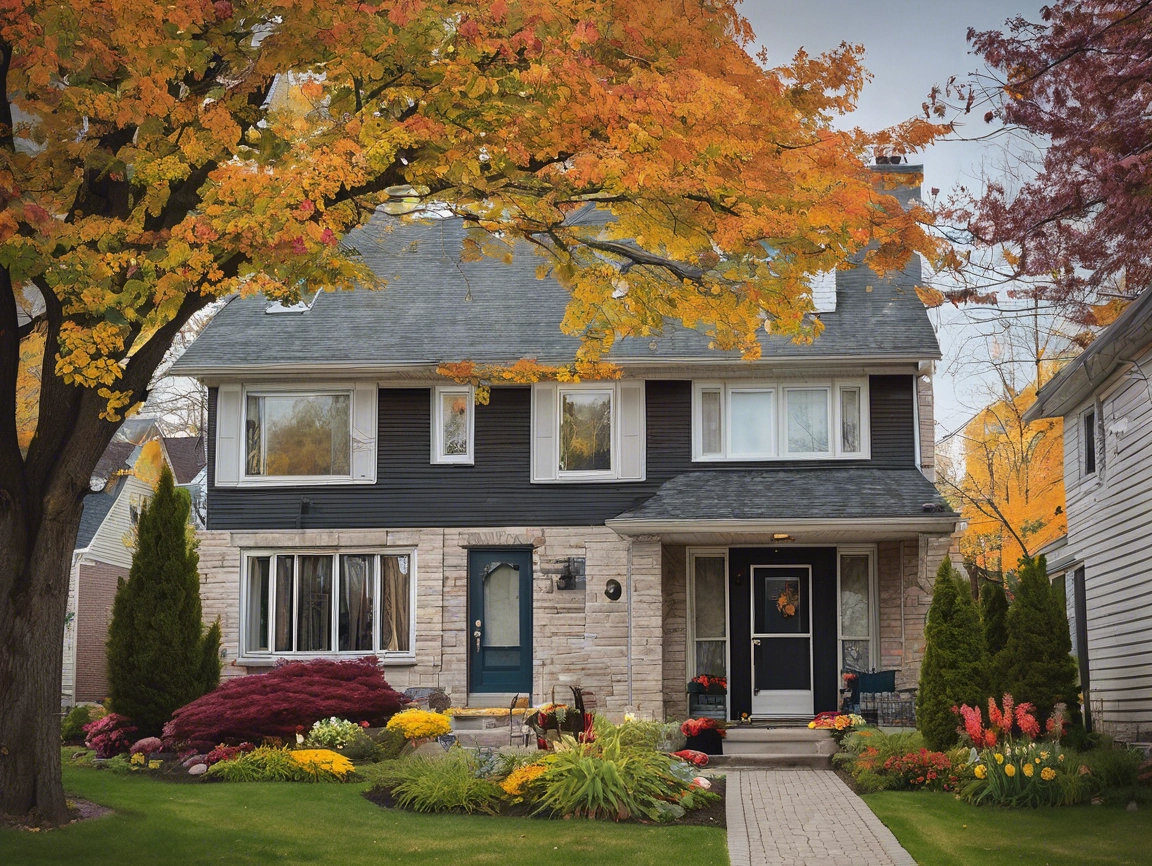The Rhythm of Home: Embracing Seasonal Maintenance in Ottawa’s Climate
There exists a profound relationship between our dwellings and the natural world that surrounds them. In Ottawa, where the dance of seasons unfolds with particular intensity, this relationship demands our conscious attention and care. The home is our sanctuary and shelter which endures nature’s full spectrum, from wintery icy grip to summers languide warmth, each transition placing unique demands on the structures we inhabit.
The Symphony of Seasons and Structure
Ottawa’s climate presents a masterclass in extremes. Winter’s deep freeze gives way to spring’s thaw, creating a cycle of contraction and expansion that tests the very foundations upon which our homes stand. This natural rhythm, beautiful as it may be for the human spirit, imposes a certain vulnerability upon our dwellings a vulnerability that, left unattended, transforms into weakness.
The ground heaves with frost’s arrival and retreat, shifting foundations in its silent dance. Melting snow searches for pathways of least resistance, finding its way through imperceptible cracks, exploiting weaknesses in our home’s protective envelope. These are not merely inconveniences but rather conversations between our built environment and the natural world conversations that require our mindful participation.
The Philosophy of Prevention
To maintain a home in Ottawa is to engage in a practice of foresight and care which is a practice that mirrors how we might tend to our own wellbeing. Like personal development, home maintenance follows a cyclical pattern, demanding different forms of attention as the seasons progress:
Winter Preparation calls us to reinforce our homes defences such as servicing heating systems that stand between our comfort and the cold, sealing pathways where drafts might steal warmth from our spaces.
Spring Tasks invite renewal and assessment: cleaning gutters clogged with winter’s debris, examining basements for signs of water’s intrusion the harbingers of more significant problems to come.
Summer Checks offer opportunity for restoration: touching up paint worn thin by sun and rain, strengthening decks and fences that connect our private spaces to the outdoors.
Fall Readiness demands preparation for the cycle’s return: regrading soil to direct water away from foundations, preparing irrigation systems for winter’s hibernation.
This quarterly approach to home maintenance mirrors the wisdom of incremental personal growth, addressing small issues before they become defining problems, making consistent investments rather than awaiting catastrophic failure.
The Wisdom of Knowing One’s Limits
There exists a delicate balance in home maintenance between self-reliance and the wisdom of seeking expertise. The confident homeowner might change filters, apply fresh caulk, or touch up paint, tasks that require attention but minimal specialized knowledge. These small acts of maintenance are akin to daily habits that sustain our personal wellbeing.
However, certain challenges demand deeper expertise. Electrical systems that carry invisible danger, structural repairs that bear the weight of safety, plumbing connections that, if compromised, bring cascading consequences. In these domains, professional assistance isn’t merely convenient but necessary for both immediate resolution and long-term peace of mind.
This distinction between self-help and professional intervention reflects a profound truth about human development: knowing the boundaries of our capabilities is not weakness but wisdom. We grow not only through expanding our skills but through recognizing when to seek guidance from those with specialized knowledge.
The Interconnected Nature of Home Systems
A home, like a human life, functions as an integrated system rather than isolated components. The furnace that provides warmth influences air quality and energy consumption. The roof that shields from rain affects the foundation’s exposure to moisture. The windows that invite light impact both heating efficiency and interior comfort.
Understanding these connections transforms maintenance from isolated tasks into holistic care. A perspective that encourages us to see our homes as living systems requiring balanced attention rather than crisis management.
In Conclusion: Beyond Maintenance to Stewardship
The practice of home maintenance in Ottawa’s demanding climate ultimately transcends mere preservation. At its deepest level, it becomes a form of stewardship to acknowledge that our homes, while privately owned, exist within larger contexts of community, environment, and time.
When we maintain our homes with intention and care, we’re respect not only our investment but also the craftsmanship of those who built them, the resources they embody, and the legacy they represent for future inhabitants. We participate in a tradition of care that extends beyond our individual ownership.
In this way, home maintenance becomes more than a seasonal checklist. Eventually its transforms into a mindful practice that connects us to our environment, our community, and the ongoing narrative of human shelter in a world of constant change. So, let’s be mindfull, dear people. Thank you.

